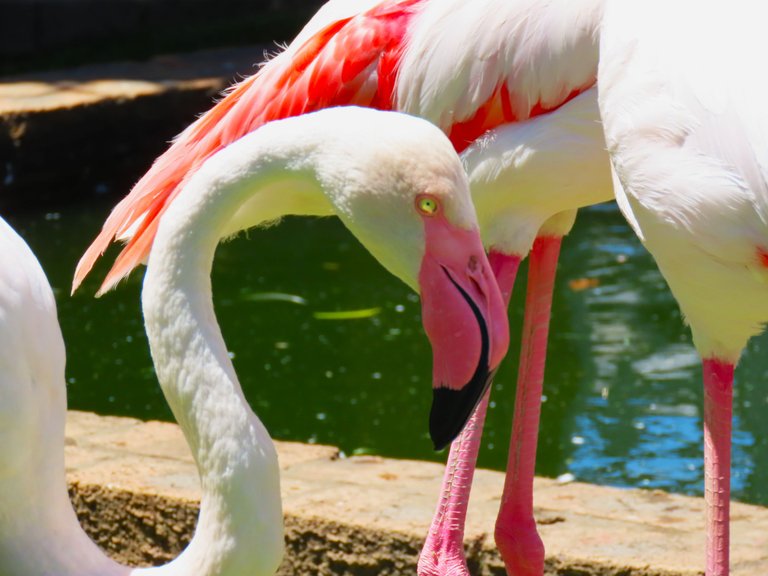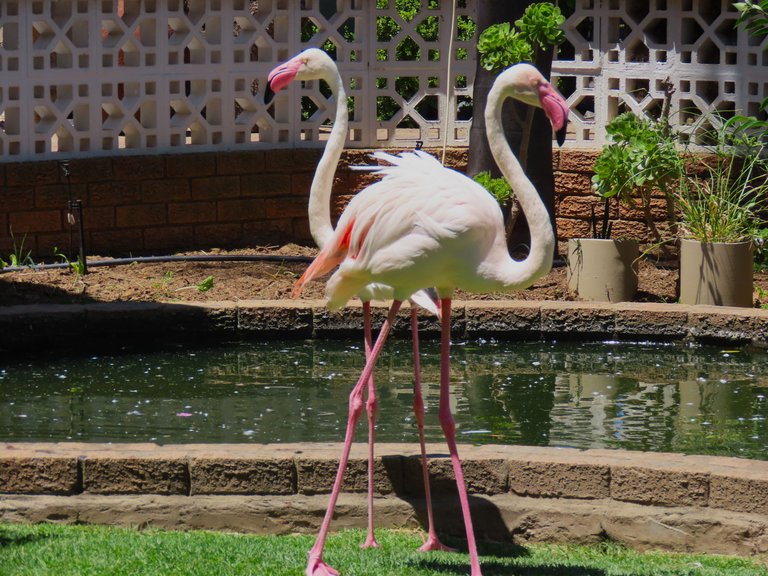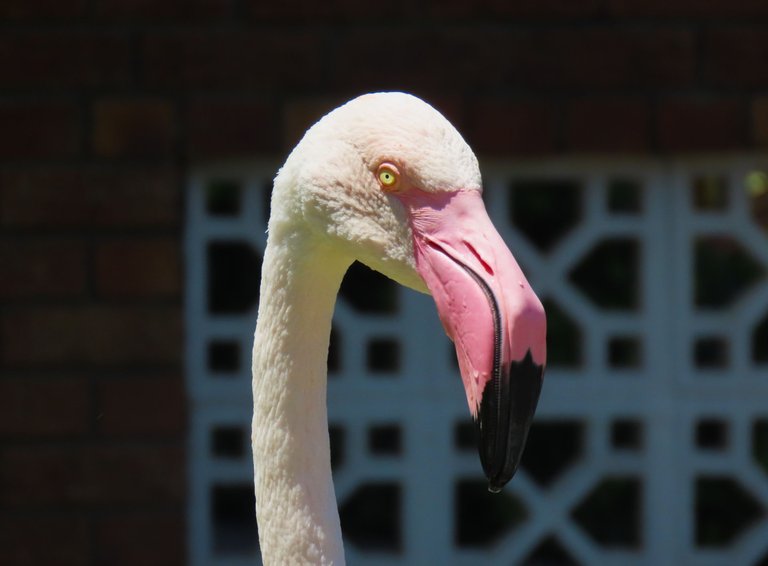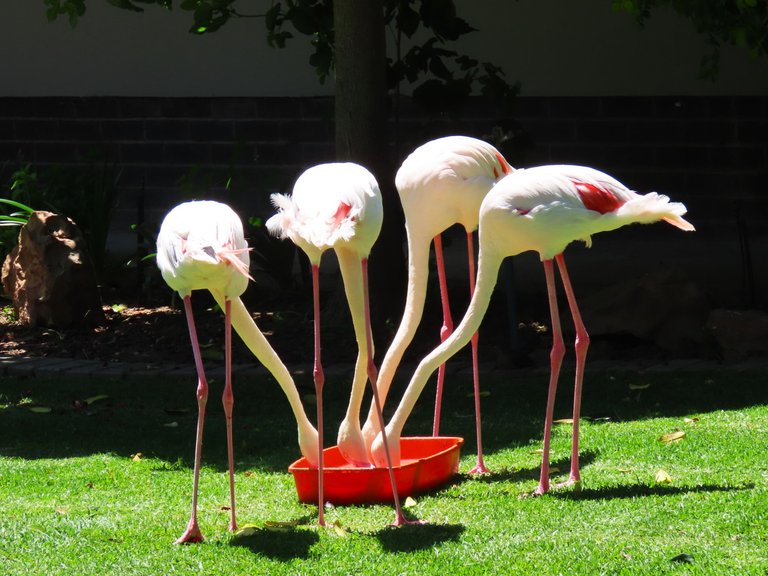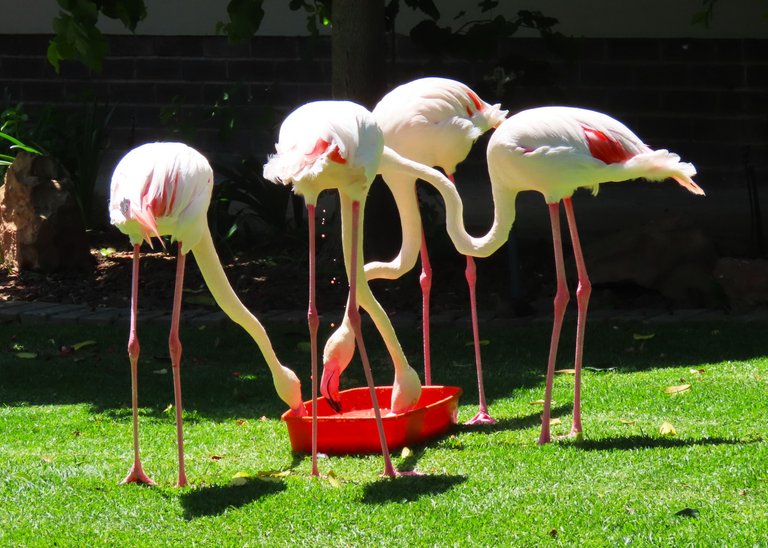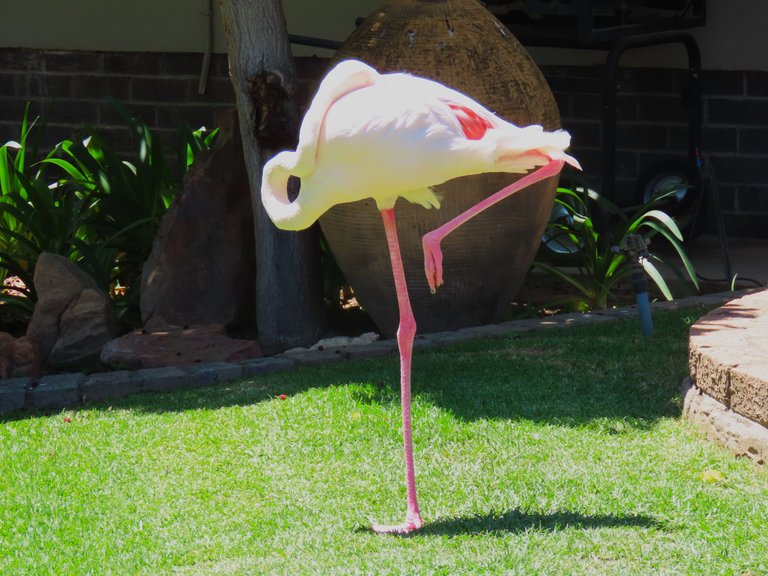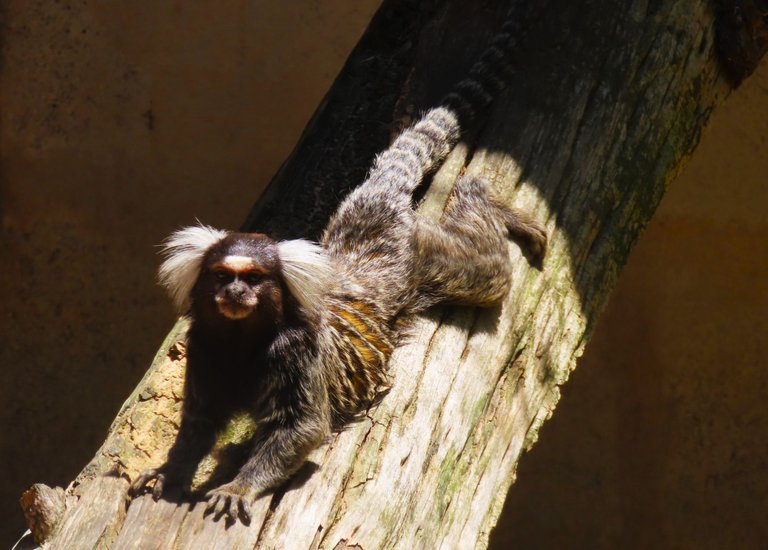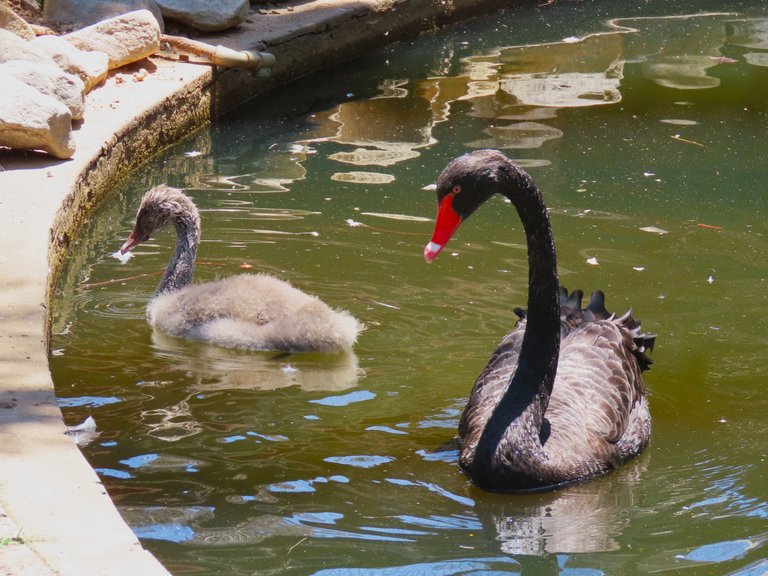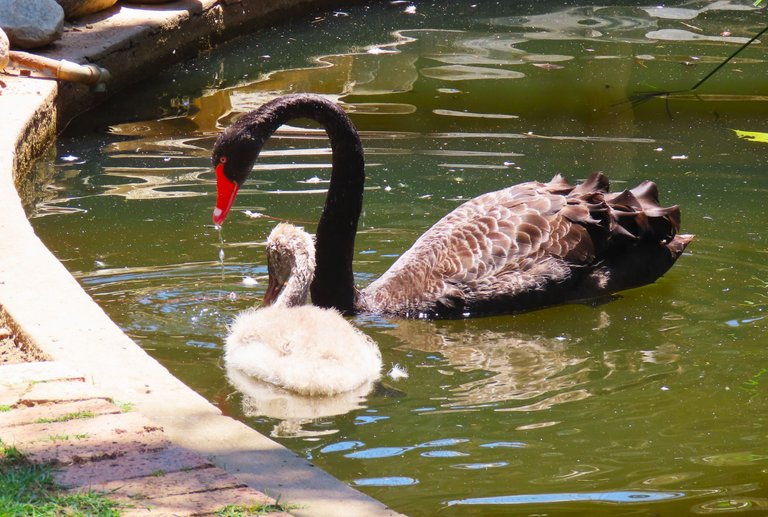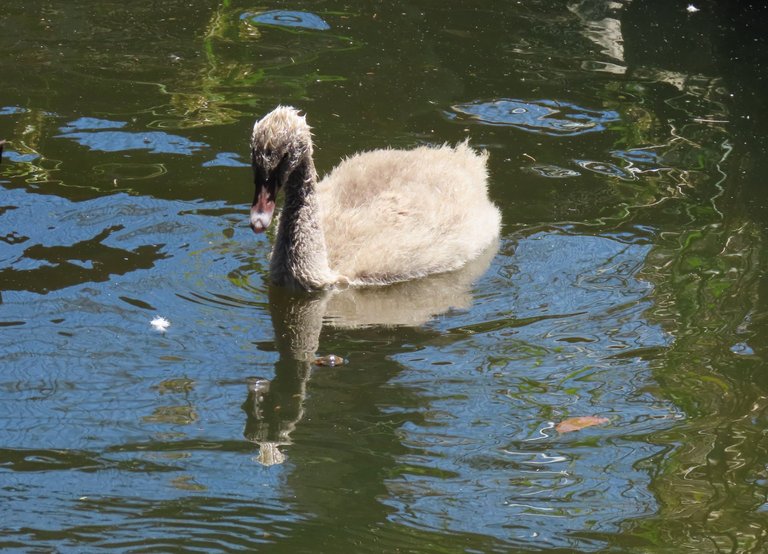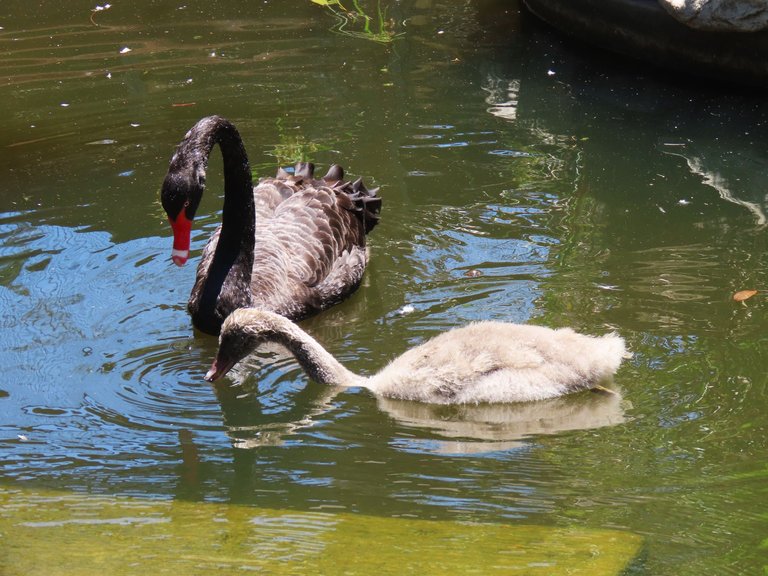I will show you some more pictures of the flamingos and then a black swan. But not only a black swan, as also a black swan baby. So first let's have a look at the flamingos.
Did you know that flamingos have yellow eyes? Look how nicely their eyes match with their pink beaks.
Did you also know that the bottom of a flamingos beak is fixed, and that it opens the top part of the beak? This is so that they can scoop the food in the water up in the cup of the fixed bottom beak, and then to filter out the water.
Flamingos or flamingoes[a] /fləˈmɪŋɡoʊz/ are a type of wading bird in the family Phoenicopteridae, which is the only extant family in the order Phoenicopteriformes. There are four flamingo species distributed throughout the Americas (including the Caribbean), and two species native to Afro-Eurasia.
Flamingos filter-feed on brine shrimp and blue-green algae as well as insect larvae, small insects, mollusks and crustaceans, making them omnivores. Their bills are specially adapted to separate mud and silt from the food they eat, and are uniquely used upside-down. The filtering of food items is assisted by hairy structures called lamellae, which line the mandibles, and the large, rough-surfaced tongue. The pink or reddish color of flamingos comes from carotenoids in their diet of animal and plant plankton. American flamingos are a brighter red color because of the beta carotene availability in their food while the lesser flamingos are a paler pink due to ingesting a smaller amount of this pigment. These carotenoids are broken down into pigments by liver enzymes. The source of this varies by species and affects the color saturation. Flamingos whose sole diet is blue-green algae are darker than those that get it second-hand by eating animals that have digested blue-green algae.
A group of flamingoes is called a "flamboyance".
And this is how the sleep, on land and in shallow water.
My line break is a marmoset monkey.
Now let's have a look at the black swans.
Now this is the thing with all bird babies, they are either colored like aliens, as in the case of the coot babies, or they have a neutral drab color like this black swan baby.
Were one to see this baby on its own, it can never be imagined how beautiful it will be in adulthood.
This is the wisdom of nature, as babies are defenseless and their neutral colors are designed to blend in with the surrounds where they are born, and to camouflage them in the case of hungry predators on the prowl.
This place where we are staying, is a veritable gold mine of wildlife, and the town also has a very rich history. Sadly, we have now arrived at the last day of our stay and soon we will be back on the long road home. But the short break has really given us some good rest. We now have many great memories to take back with us, and that's always a good thing.
I will continue to show you some nice views of this place.
I hope you have enjoyed the pictures.
Photos by Zac Smith-All Rights Reserved.
Camera: Canon Powershot SX70HS Bridge camera.
Thank you kindly for supporting this post.
